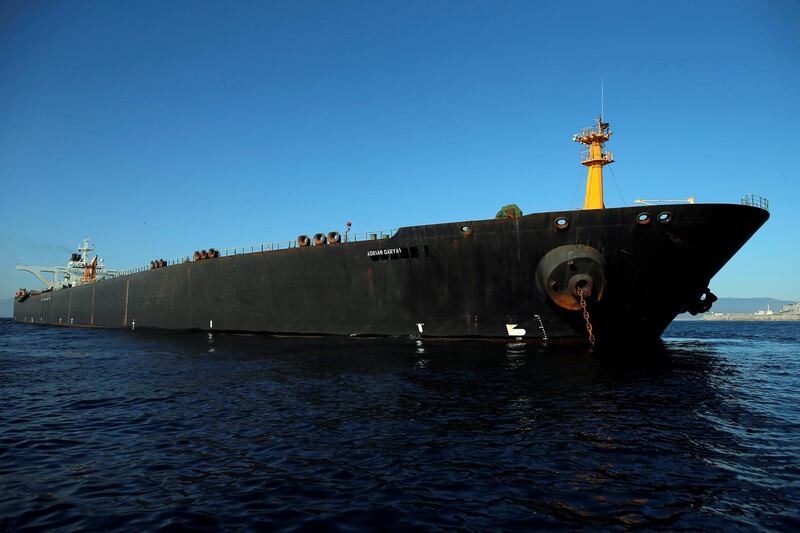Iran is likely to step up its floating storage capacity considerably over the remainder of the year if it finds its exports squeezed due to increasing scrutiny on movement of its crude-carrying vessels.
The country, which has around a 120 million barrel-capacity tanker fleet, is estimated to have utilised 30 million to 40 million barrels of capacity as floating storage as sanctions began to tighten, according to Iman Nasseri, managing director for the Middle East at London-based Facts Global Energy.
Iran would need 30 to 40 million barrels of fleet capacity to continue exporting 300,000 to 500,000 bpd of exports using its own vessels, which means the country would have to double its capacity to around 80 million barrels.
“[However,] In a scenario that Iran's exports drop to less than 300,000 barrels per day, they could use 100 million [barrels of] capacity of their fleet for storage and utilise the remaining 20 million barrels for those vessels delivering their sales of crude and condensate,” he added.
Iran's exports fell to below 500,000 bpd following the cancellation of waivers by the US to eight of its top oil buyers, according to FGE. Exports have remained in a band of 300,000 and 500,000 bpd since, with the majority of shipments headed to Syria or China. Iran supplies Syria's refinery at Baniyas with around 100,000 bpd of crude, while also taking advantage of its territorial waters as a haven for ship-to-ship transfers. Such transfers have become increasingly common following the White House’s attempts to squeeze Iran's exports to zero and penalise trading houses and companies dealing with its crude or condensate. During transfers, a larger vessel loaded with Iranian crude offloads its cargo to smaller vessels while having their automatic identification system (AIS) transponders off.
TankerTrackers.com, which has been monitoring satellite data on loadings of Iranian crude in its territorial waters, saw Iranian exports fall to 500,000 bpd in May just after the cancellation of waivers, with figures for July picking up to around 800,000 bpd.
Mr Nasseri noted that at least some of these loadings could be transfers to Iran’s floating storage, particularly if the cargo was condensate, for which the country presently does not have many purchasers.
Condensate is a liquid associated with gas production and, under the round of sanctions enforced by the Trump administration, has been embargoed.
Iran produces 239.5 billion cubic metres of gas, nearly all of which is absorbed domestically for power as well as non-power needs. The country therefore has a surplus of condensate associated with the production, which cannot be offloaded easily on to the markets as buyers for the commodity are limited.
“Even the Chinese have issues with sulphur content, so they [Iran] will have to store condensate in floating storage,” said Mr Nasseri.
While China has proved a reliable off-taker for crude, allowing Iran to park millions of barrels in bonded tanks, Beijing may find its hands tied should the US, with whom it is engaged in talks to resolve the ongoing trade war, decides to pressure it to reduce or halt imports.
"If they come to an agreement, there will be pressure on China to cut back or eliminate Iranian crude imports,” said Giorgos Beleris, Mena oil research manager at Refinitiv.
Mr Nasseri added that while Tehran may have been taken off guard by the seizure of the tanker Grace 1, which had taken the long route through Africa to reach the Mediterranean, possibly for Syria, Iranian cargoes are unlikely to stop using the Suez Canal.
“They didn’t think that such a seizure will happen [but] they may continue sending smaller vessels through Suez,” he added.








